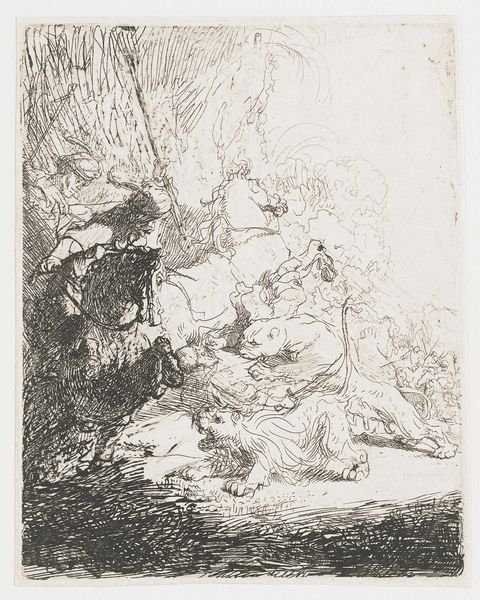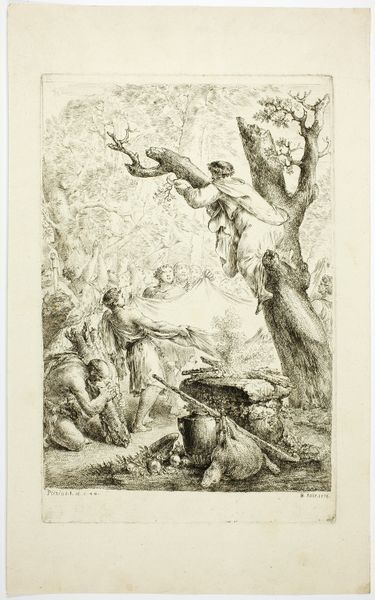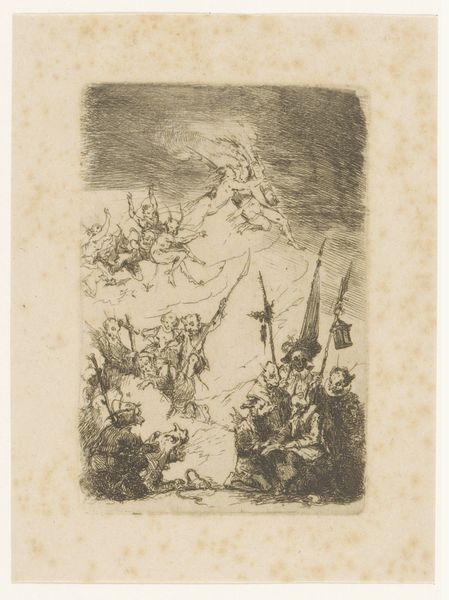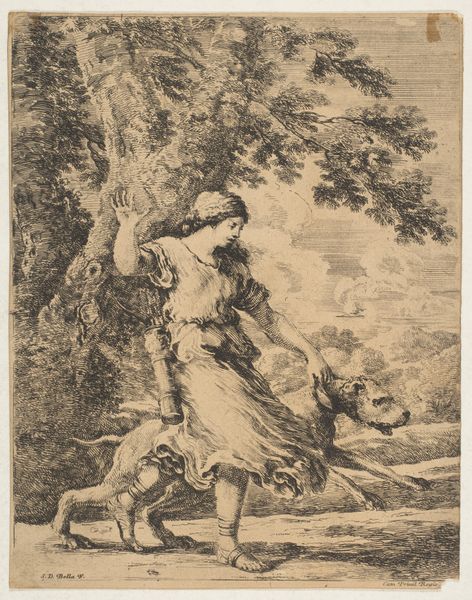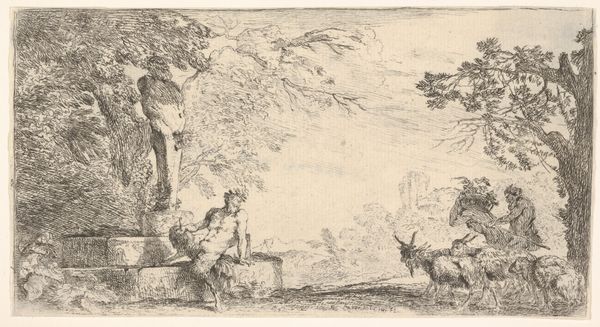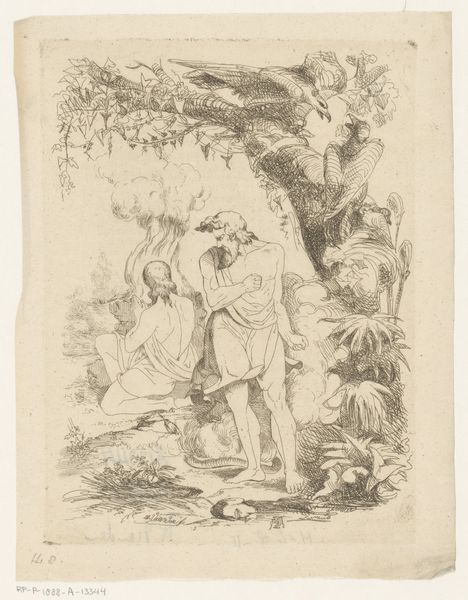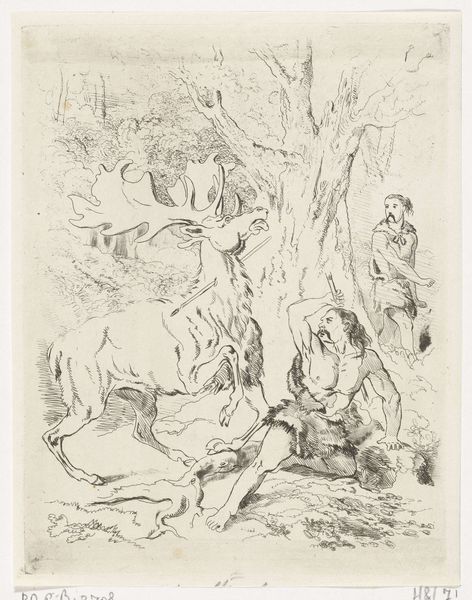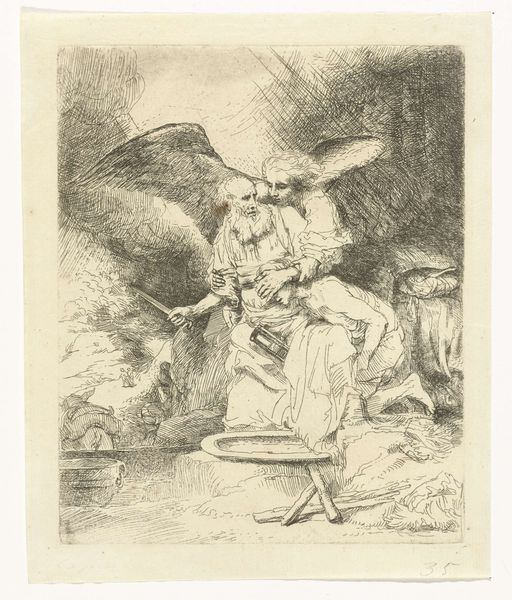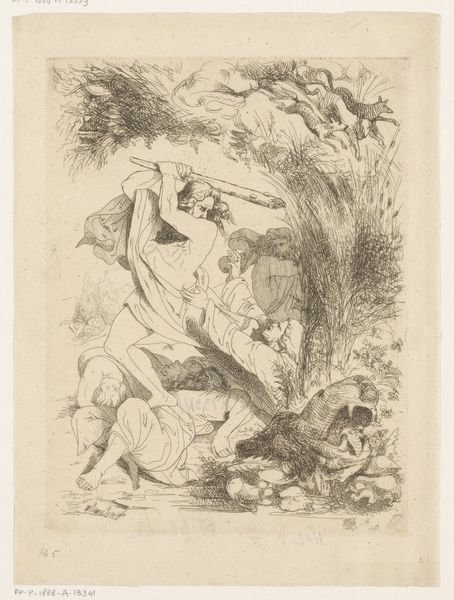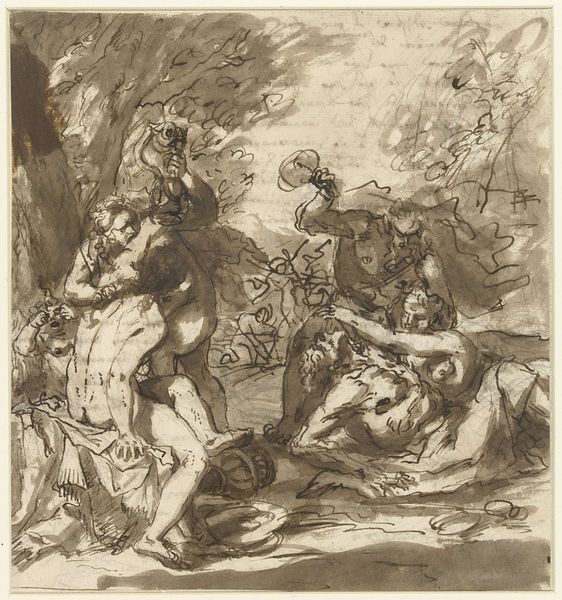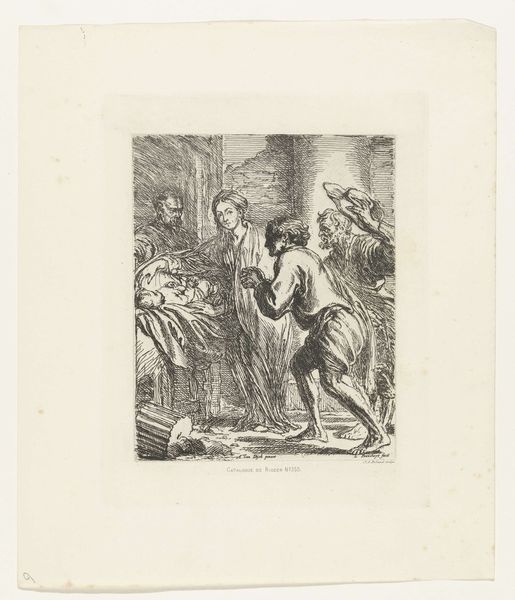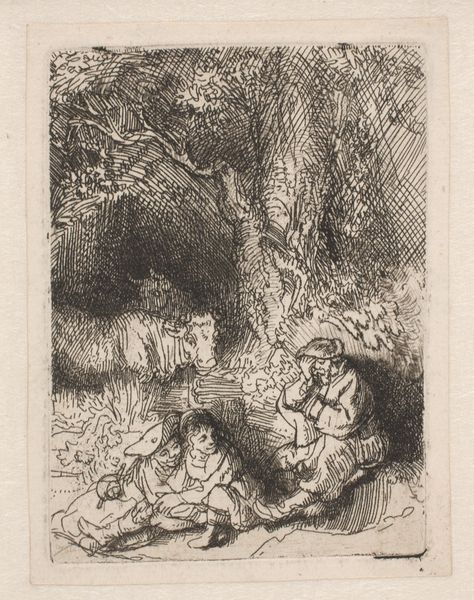
drawing, print, etching, plein-air
#
drawing
#
garden
# print
#
impressionism
#
etching
#
plein-air
#
landscape
#
bird
#
figuration
Dimensions: Sheet: 9 9/16 × 12 1/16 in. (24.3 × 30.7 cm) Plate: 6 3/4 × 6 3/4 in. (17.1 × 17.1 cm)
Copyright: Public Domain
Editor: Here we have Félix Bracquemond's "In the Zoological Garden," created between 1868 and 1878. It's an etching – a print – showing figures among birds in a garden setting. There's almost a dreamlike quality to the composition. How should we interpret the piece with an eye on its tangible components? Curator: Well, let’s consider Bracquemond's method. As a master printmaker deeply interested in materials and their social context, his choice of etching is quite telling. The laborious process, biting the metal plate with acid, inking, and printing, reveals a fascination with industrial means of production, especially at a time when such technology democratized art production, and made images widely available for middle class consumption. What about that etching, do you notice any aspects that speak to process or technique? Editor: It feels like I can trace his hand as he built up the layers of etching. I see that in the cross hatching. He had to know what his labour would yield in the final rendering. Is that focus on the artisan an attempt to blur the line between the so-called high arts and the world of craft production? Curator: Precisely. Bracquemond was keenly interested in breaking down such hierarchical boundaries. Consider the subject matter, too: this isn't a grand historical scene or religious allegory, but rather a leisurely moment observed at the zoo, something anyone might have done if their means permitted. Doesn’t it seem like his deliberate emphasis on accessible subjects points towards dismantling the exclusivity associated with “high art” making it part of everyday life? Editor: Absolutely, yes. Now that you mention it, there is something democratic and engaging with this seemingly quiet slice of 19th century bourgeois life on display. So much to unpack. Curator: And that careful observation tells us volumes about leisure and social status during that period. Considering that this artwork lives at the Met in New York City what do you see as the role of displaying it within such an institution? Editor: I will need to spend more time to see other dimensions that resonate now!
Comments
No comments
Be the first to comment and join the conversation on the ultimate creative platform.
